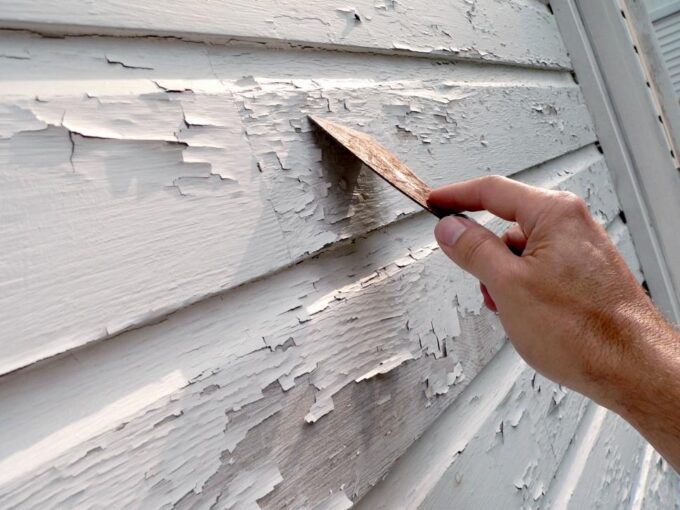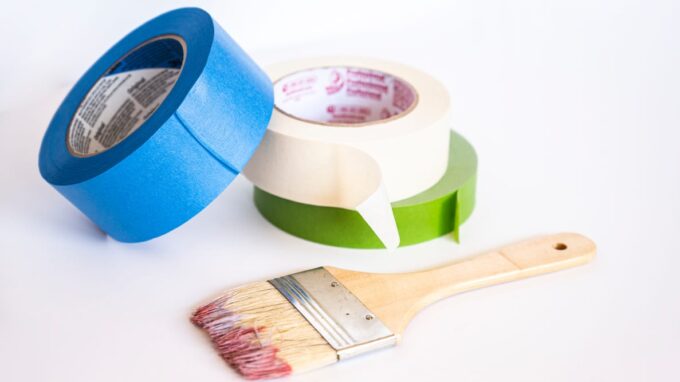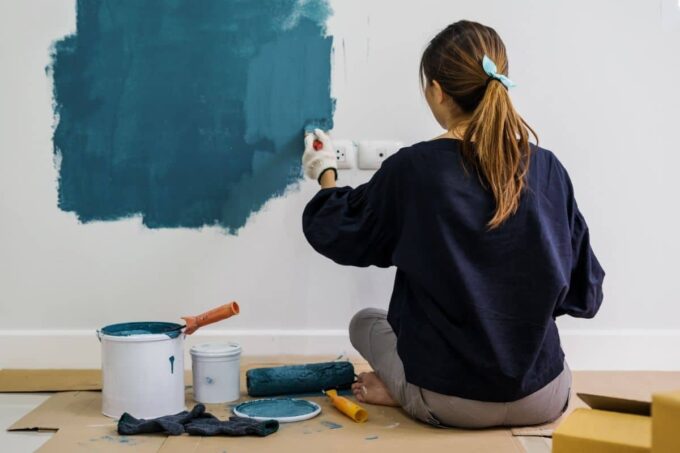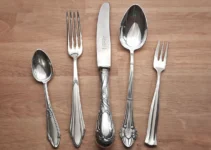Adding a fresh coat of paint to your home’s interior is a cost-effective way to spruce it up. However, there are various painting mistakes that can lead to a less than impressive outcome. In this article, we’ve highlighted 11 common house painting mistakes and how to avoid them.
1. Skipping the prep work

Source: hgtv.com
Failing to prepare the actual surface is one of the most overlooked steps when working on a paint job. Most people assume that the fresh coat of paint will effectively cover the dirt and dust on the surfaces, which is often untrue. Painting over pre-existing scratch, cracks, oil, bubble holes, dirt, and debris results in uneven paint spots, chipping, and peeling.
To ensure your paint lasts longer and achieves the best results, you should deep clean the surfaces with soapy water and allow them to dry. Be sure to sand down blemishes and fill holes on the surfaces before painting. Remember to tape up doorknobs and cover anything in sight. Preparing surfaces for painting is time-consuming and exhausting. Consider hiring professional painters to handle the preparation work for your project. You can hire professional painters such as Paysons Painting if you are unsure of how to handle this task yourself.
2. Failing to use primer
Priming preps the surfaces, allowing the paint to adhere more easily. It also ensures that the actual color of your paint shines through. Applying primer ensures that the old color does not bleed through when changing your surface color. Seal the wood with tannin-blocking primer before adding a fresh coat of paint to prevent discoloration and staining due to natural tannins in the wood when wet.
3. Failing to use the painter’s tape

Source: reviewed.com
Most people fail to tape surfaces before a paint job as it is a tedious process. However, taping the edges of the door frames, walls, and windows sills reduce paint splutters, allowing you to achieve neat, professional lines between the surfaces. You can also easily paint a specific surface section with decorative trims when using painter’s tape. Ascertain that the surfaces are clean before applying the painter’s tape and seal the tape tightly along the edges for a polished finish.
4. Leaving the painter’s tape up for too long
The painter’s tape helps you achieve professional-looking results. However, when left up for too long, it could result in the paint peeling upon removal. Be sure to remove the tape an hour after the paint job to get the desired appearance.
If you let the tape sit for an extended period, consider using a razor blade to score along the tape’s edges while peeling it back. Alternatively, use a blow dryer to heat up and loosen the binder, then roll it away from the walls with your fingers.
5. Not purchasing enough paint

Soruce: forbes.com
A common mistake in most DIY house painting projects is not buying enough paint. This results in abandoning the project midway to get extra paint. You may fail to get the exact color of paint, which could extend the length of the project. The final color may also differ slightly when applied at different times, so getting enough paint on your first purchase is essential. Usually, a gallon of paint should cover 400 square feet, so you should take measurements of your surfaces and estimate accordingly. To be on the safe side, purchase extra paint to give room for touch-ups or add an extra coat.
6. Using the wrong paintbrush
Using the right paintbrush helps you achieve a uniform surface coat and finish. Consider the type of paint you intend to use to choose suitable brushes. For instance, you should use natural-bristle brushes for oil-based paints and synthetic bristles made from polyester or nylon for water-based latex paints.
7. Using the wrong paint sheen

Source: mymove.com
No matter how perfect your application technique is, using the wrong paint sheen leaves you with an unintended feel and look. The polish determines the glossiness of the paint once it is dry. There are different sheen types, including semi-gloss, gloss, matte, and flat, so you should do your due diligence before settling for a particular sheen.
Consider a matte or flat paint sheen for surfaces without a smooth finish, such as the ceiling, as they can easily hide imperfections. Use the semi-gloss sheen for smooth surfaces such as walls to protect the areas from moisture penetration that could result in the growth of mold and mildew.
8. Picking the wrong paint color
Most people order paint based on the color on the sample strips at the stores. However, the results do not often look like the colors one picked out upon application. To avoid making the same mistake, you should pick a few sample colors for your home and observe them under artificial and natural lighting to understand what the paint will look like.
9. Painting a wet surface
While you may never knowingly paint on a damp surface, some rooms, including bathrooms and kitchens, collect a lot of humidity. Such spaces may have subtle dampness clinging on their surfaces, so you should dry all areas down before starting the paint job to avoid streaks and uneven application.
10. Overbrushing

Source: newlinepainting.com.au
Brushing over the same area even when the paint has started drying or applying too much paint on the brushes results in ridges and unsightly brush marks on your surfaces. To achieve the smoothest possible finish, you should gradually build up the paint using consistent brush strokes. Check the instructions on your paint for the recommended drying time between coats to avoid ruining your paint job.
11. Ignoring the weather
Before beginning your painting project, consider the prevailing weather conditions, as paint does not handle excessive temperatures. For instance, high humidity levels could slow down a water-based paint’s drying time. Extreme heat makes the paint dry too quickly, leaving an uneven finish, while freezing temperatures deter paint from drying evenly, resulting in peeling and cracking.
Always check the manufacturer’s instructions for optimal temperatures for applying specific paints. Consider rescheduling your project for another day or adjusting the temperatures using portable air conditioners or space heaters to achieve favorable conditions.
Endnote
Painting is one of the easiest and most cost-effective home upgrades. It makes your house appear brighter, and increases the value of your home. Familiarize yourself with the above house painting mistakes and avoid them to achieve an excellent, lasting finish.







